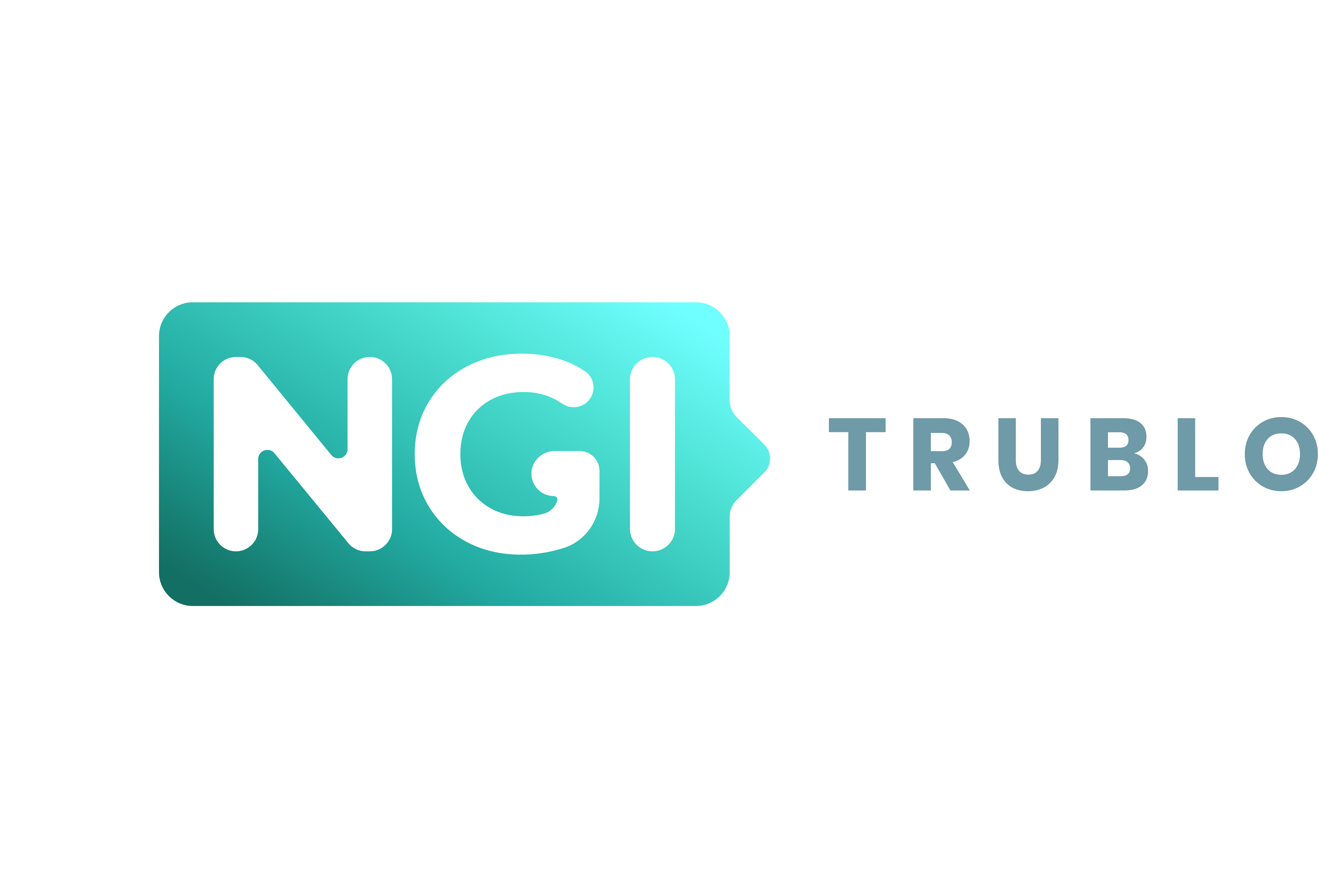Your update on news from the intersection of blockchain, content and trust.
December 22, 2021
Estimated reading time: 5 minutes, 54 seconds. Contains 1180 words.
- Projects: Check out the profiles of funded projects.
- Share: Share this newsletter with colleagues or friends
- Social: Follow us on Twitter for direct interactions or questions
PROJECT UPDATE
Getting ready for TruBlo OC3: On January 27, 2022, at 12:00 CET, TruBlo will start to take applications for Open Call #3. Selected projects can get up to 175K Euro for blockchain ideas towards trustable content. More details.
Updates this week:
TRUST
Internet users widely distrust Facebook, TikTok and Instagram handling their personal data
From a survey of 1,058 US internet users conducted for the Washington Post: 72% distrust Facebook, 63% TikTok, 60% Instagram, 53% WhatsApp, and 53% YouTube; 53% trust Amazon, 48% Google, and 44% Apple.
It’s the rare thing that Americans of all ages and across the political spectrum largely seem to agree on: They don’t trust social media services with their information and they view targeted ads as annoying and invasive.
Log4Shell
A zero-day vulnerability of Log4j, a popular Java logging framework, keeps security experts busy. The issue has been described as the most severe vulnerability ever. Many banks and financial corporations need to check their code.
Up to 20% of employees click on phishing links.
According to a 2020 report, up to 20% of all employees will click on phishing emails. Of those, up to 67.5% might then enter credentials in the phishing site.
“Experts say that companies can protect themselves by investing in a multi-layered approach to defending their internal network. Two of the most effective techniques are filtering and isolation.”
CONTENT
“Web3: A dream of the next version of the internet.”
Benedict Evans is a leading analyst for tech trends. He is the writer of a regular newsletter. In addition, he publishes one big presentation at the end of the year. The title this year: “Three Steps to the future”.
Web3 is a top development. The presentation shows how rebranding the sometimes misleading term “cryptocurrencies” to the more ambitious term “Web3” indicates that blockchain is gradually moving into the current centre of attention. We think it’s an outstanding presentation, much food for thought.
False hope for better internet?
The observation of rebranding, from a different article about Web3:
“At its core web3 is a vapid marketing campaign that attempts to reframe the public’s negative associations of crypto assets into a false narrative about the disruption of legacy tech company hegemony. It is a distraction in the pursuit of selling more coins and continuing the gravy train of evading securities regulation. We see this manifest in the circularity in which the crypto and web3 movement talks about itself. It’s not about solving real consumer problems”.
Jack Dorsey: You don’t own web3. VCs and their LPs do.
“Web3 and the metaverse are not the same”
…the reality is the metaverse will require everyone’s input and participation to truly take form. It should encompass the confluence of different iterative efforts and technological advancements and have no discrete end.
Web 3, on the other hand, is a far more specific paradigm that provides clear solutions to specific shortcomings of the Web 2 internet. It is a reaction to the walled-garden ecosystems that platforms like Facebook and YouTube created, which caused people to have their data extracted, privacy breached and the ability to control the content they create oppressed. Web 3 subverts that model because it directly addresses the issues of ownership and control.
Meta says AI tool helps for faster and better moderation content
Meta uses a new moderation system called “Few-Shot Learner” to identify and filter hate content. The new system needs less training data than the predecessor, applies to 100 languages, and checks text and visuals. According to Meta, the system has reduced the amount of hate content since 2020.
LINK
European Innovation Council: Impact Report 2021
Europe is still in catch-up mode regarding technology innovation and the creation of widely used technology platforms. By now, though, there is a chance that amounts of €50 or €100 million might be invested into an idea, and such funding would have been only available in the US five years ago.
For recent data on where things stand, please look at the Impact Report 2021 from the European Innovation Council (EIC). For context: “The EIC is Europe’s flagship innovation programme to identify, develop and scale up breakthrough technologies and game-changing innovations”.
The report documents the results and impact of the EIC pilot phase up to 2020. During that period, the EIC supported 5500 start-ups and SMEs. These projects and companies have:
- Raised a total of EUR 9.6 billion in follow on investments,primarily from Venture Capital and from corporates, national promotional banks, and others.
- Reached a valuation of around EUR 50 billion, including 91 “centaurs” (company valuation over €100m) and 2 “unicorns”(company valuation over EUR 1 billion).
Newsrooms: Investments needed for tools and talent
The news industry seems to fall further behind. One indicator is when it comes to available funds for innovation and training.
Rasmus Kleis Nielsen, Director of the Reuters Institute for the Study of Journalism, talks about the low level of funds in a recent outlook article: He compares R&D investments of several industries and finds that the percentage of revenue used for innovation is relatively low in the news industry. “The furniture industry seems able to invest in its future, and maybe we can, too?”
BLOCKCHAIN
Token Economy: Book Recommendation
We recommend a book for everyone interested in blockchain technology: “Token Economy”, by Shermin Voshmgir. The second edition of the book, published in 2021, is an updated version of the original publication from 2019. The book provides a well written, complete overview of many aspects of decentralised applications and platforms.
Digital Asset Outlook 2022
Good overview here, too:
The 2022 Digital Asset Outlook Report, commissioned by GSR, looks at the most important cryptocurrency developments in 2021 and looks ahead to the future of the space in the coming years. The 160-page report covers 8 different sectors within the cryptocurrency industry to watch for in 2022.
The download is free after registration with a mail address.
Quick updates:
- 90% of the total supply of Bitcoin has now been mined. There’s only around 2.1 million bitcoin left to mine. LINK
- The CEO of investment management firm Richard Bernstein Advisors warns that cryptocurrencies are the biggest financial bubble in history. He advises investors to stay away from “bubble assets,” including cryptocurrencies. LINK
- Visa has partnered with 60+ crypto exchanges to enable conversion and day-to-day payments from these accounts. LINK
- Germany’s conservative Savings Banks consider offering a crypto wallet. LINK
- Bank of Russia bans mutual funds from investing in Bitcoin LINK
- Swissquote to launch its own crypto exchange LINK
- The EU’s comprehensive “Market in Crypto-assets (MiCA) framework continues to move through the legislative process in the European Parliament. LINK
- The SEC (Securities and Exchange Commission) intends to work on a framework for stablecoins and decentralised finance. LINK
Green Mining
Organizations such as the Bitcoin Mining Council are working to increase transparency in the industry through higher reporting standards. Many crypto-native organizations are also joining the Crypto Climate Accord, committing to achieve net-zero emissions from electricity consumption associated with crypto-related operations by 2030.
Thank You for reading.
Please forward this newsletter to colleagues: Click here to subscribe.
Do you have feedback or suggestions? Contact us
Photo by omid roshan on Unsplash


0 Comments